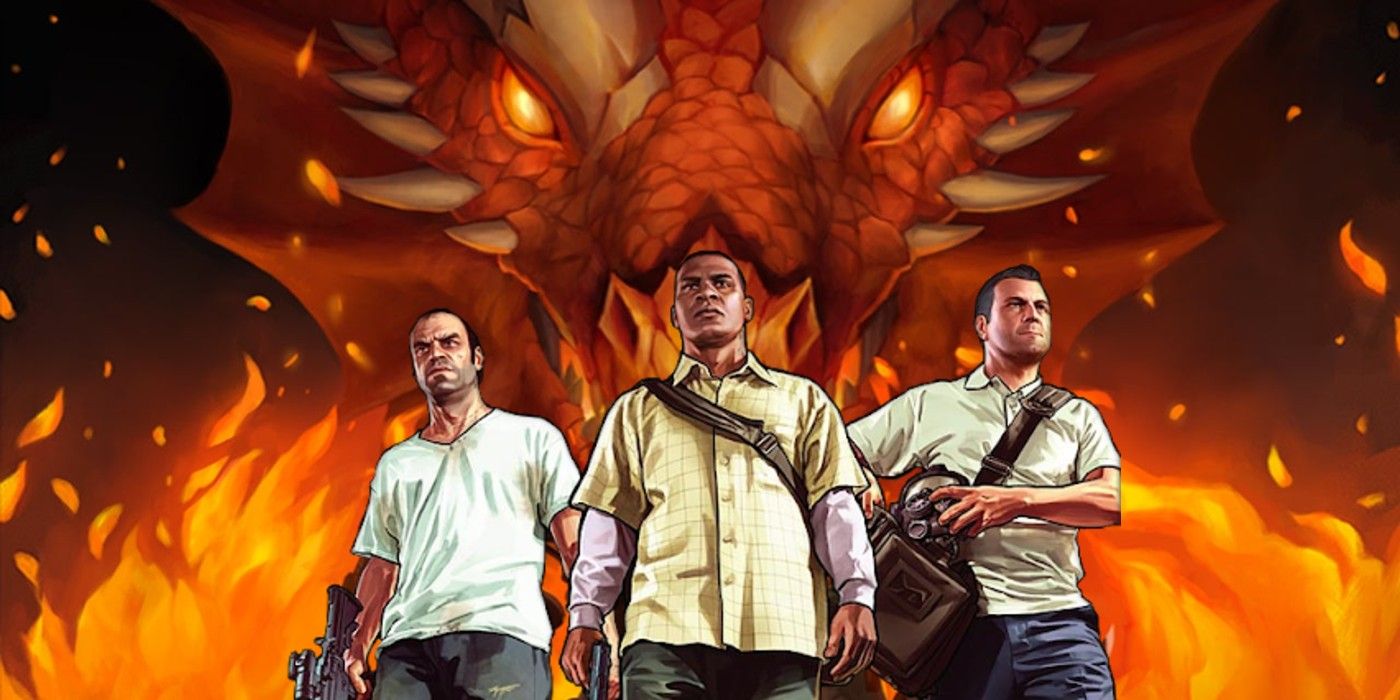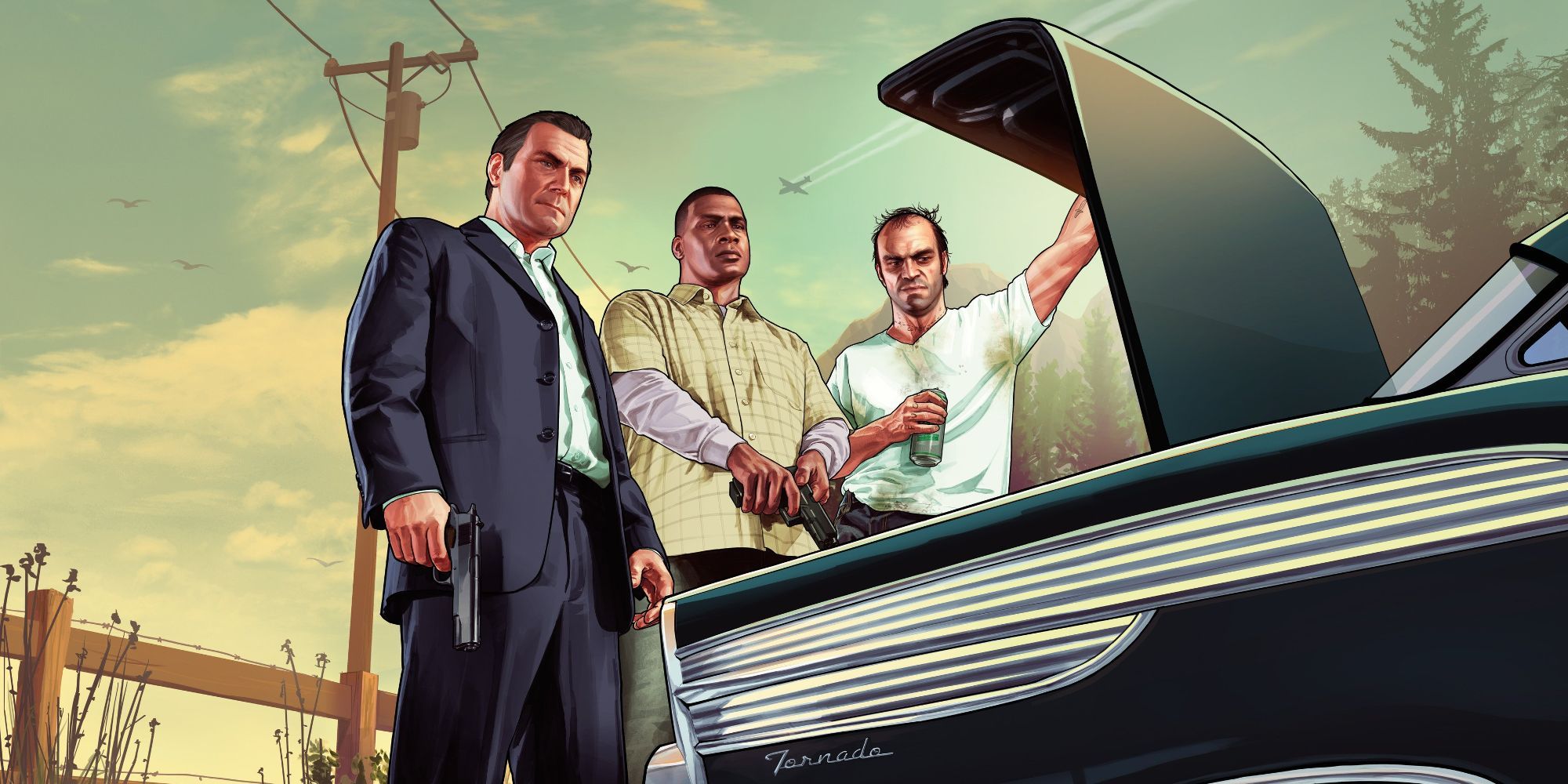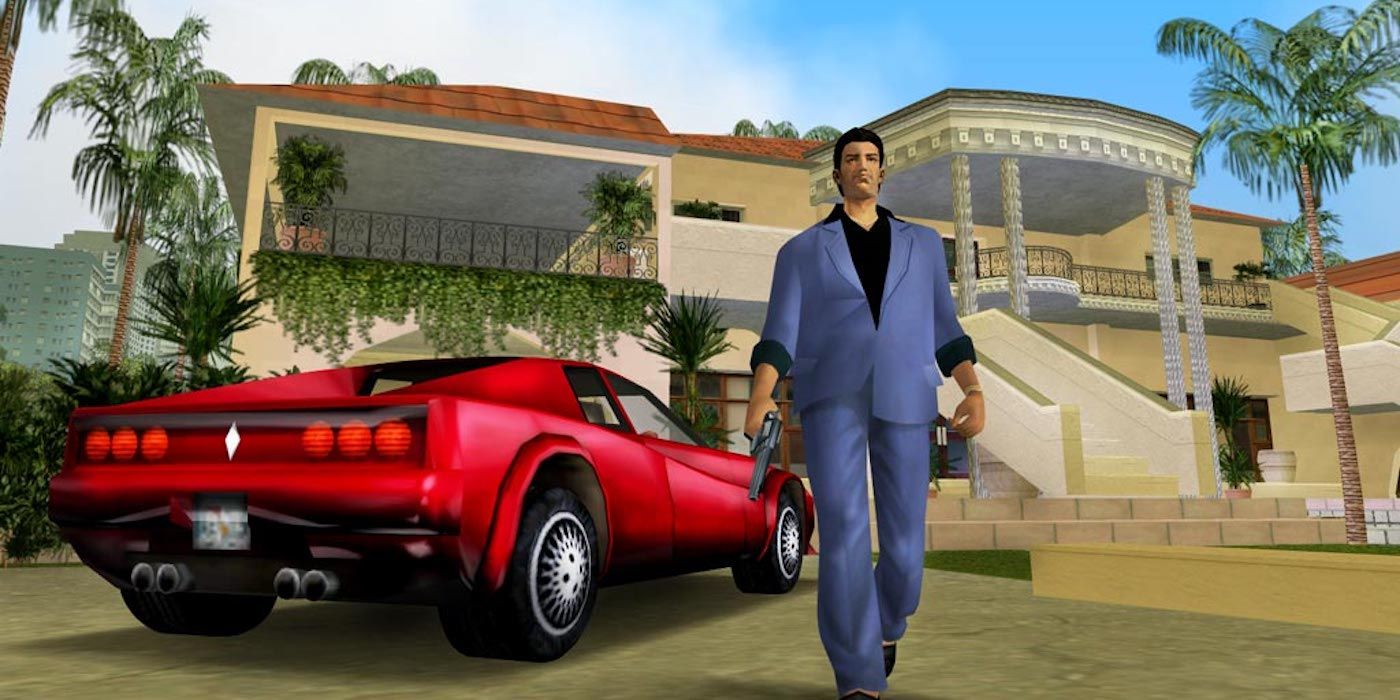
There may not be two properties more synonymous with their medium than Dungeons & Dragons and Grand Theft Auto. When people think of tabletop roleplaying, Dungeons & Dragons is the name they're most likely to know. Likewise, there are few video games as popular and with as much critical acclaim in the last two decades as the Grand Theft Auto series. For fans of both franchises, here's how to incorporate some GTA into D&D.
Homebrew is when DMs - the person that sets the narrative, creates the world, plays the NPCs, and generally runs the game - create their own setting for a tabletop campaign. Homebrews are a tried and true D&D tradition because not everyone who wants to play a TTRPG has the same idea of what their world should look like, even if they're comfortable accepting most of the basic mechanical aspects of Dungeons & Dragons. Using homebrew ideas, any game master can turn their weekly tabletop roleplaying session into an interactive crime film or a mayhem simulator.
Broadly speaking, there are two approaches to making a Grand Theft Auto-inspired Dungeons & Dragons campaign: incorporate themes of lawlessness into a more-commonplace D&D fantasy setting, or apply D&D tabletop rules to a world inspired by Grand Theft Auto. The former idea is almost intrinsic to D&D as it already exists. The latter, on the other hand, is rife with new and unexplored possibilities. Grand Theft Auto's universes provide a wealth of setting, scenario, character, and mission ideas that could make a fun D&D game.

The first step is deciding on a setting. A Grand Theft Auto-inspired D&D game could be set in several locales. There's Liberty City, home to Grand Theft Auto, Grand Theft Auto 3, Advanced and Liberty City Stories; and more closely copying New York City in Grand Theft Auto IV, its expansions, and Chinatown Wars. There's London from the first two GTA expansions. There's San Andreas - the city of San Francisco reimagined in the original GTA; and there's Vice City, star of its own titular game inspired by the Miami of Miami Vice and Scarface.
A GM could even set their D&D in a certain Grand Theft Auto era and allow players to go between locales (as the original GTA went between San Andreas, Liberty City, and Vice City), if they thought one metropolitan area was too much of a limitation. Or, if they wanted to be especially daring, they could incorporate a town from another Rockstar property - like Manhunt's Carcer City - or even a modern version of a town from the Red Dead Redemption games.
That setting will be informed by themes. The campaign could include a faction of criminal organizations with fraternal closeness, or one whose front locations are key to the businesses of the story. The campaign could incorporate a drug kingpin class or career path with mission options like traveling out of the U.S. to set up a distribution deal. The setting could naturally include people that are forced into gang life because of a lack of outside opportunities rather than opportunism. Maybe the party could invest in Vice City real estate, or perhaps a DM could focus on executing an individual heist.
Another idea could be to allow players to interact with the satirized version of Hollywood from GTA 5, pulling capers for producers or photographing stars for the paparazzi. Maybe there's an opportunity to draw on the cinematic history of undercover police, and the early GTA games allowed players to take stolen police cars, turn the sirens on, and mow down criminals for the good of society. This could be another career path, or at least a diversion, for a GTA and D&D crossover.

The roles of the party members will determine their quests. In each GTA game, the protagonist begins as either a small-time hood, a former big-time criminal, or both, and works up to running the city or accomplishing revenge by helping real estate and media moguls meet their goals. This can be a way for the GTA and D&D scenario to start - in the first session, after the players have designed individual characters, they could meet to do a small robbery together before getting involved in more elaborate heists, a mainstay of GTA 5 and the lifeblood of GTA Online expansions.
The initial robbery and the more elaborate heists could be settled with the players describing how they went for the drawers instead of the safe, or the DM determining whether they were successful in deactivating the alarm or destroying the security tapes. D&D has been described as a mix of improv and math; the range between maximum and minimum heist success in a tabletop RPG would be determined by checking dice rolls. Those could affect the "Wanted"/"Busted"/"Wasted" mechanic - who makes it out after the robbery and who doesn't? - as well as allowing the party some flexibility regarding character death and re-rolls.
Alternatively, the players could begin on individual paths before meeting with a crossover event. They could engage in side quests like joining a local street race circuit or low-rider car show. They could even start as their own gang looking to accrue money and power in whichever city they start in. The D&D party could recruit gang members to take over different areas of turf - like in Vice City, San Andreas, and Vice City Stories - or have special abilities like in GTA 5 that combine to be like magic in D&D.

If the players have a mind for economics, another wrinkle the DM could add is the fluctuating drug market from Chinatown Wars, where the key is to buy a given substance low in one part of town to buy high in another, which could require either meticulous spreadsheet work from the DM or a series of d20 dice rolls to determine if players get good deals or raw deals from their business partners.
The DM could introduce a mechanic to have the player's in-game actions affect a stock market, as in GTA 5, increasing immersion with player characters' actions having a ripple effect through the game world, with the DM dropping hints about businesses the players could investigate. GTA's Strangers & Freaks side missions could be incorporated into this D&D narrative by having random encounters between missions, with surprise consequences for engaging or ignoring them, a mechanic that's intrinsic to D&D.
In order for Dungeons & Dragons and Grand Theft Auto to combine, all it takes is some creativity from the DM and a willingness from the players to try it out. A GTA-themed D&D run could allow a fan of both games to pull their favorite features from GTA and streamline them for a tabletop roleplaying experience.
https://ift.tt/3k31tpO
July 09, 2021 at 11:29PM




